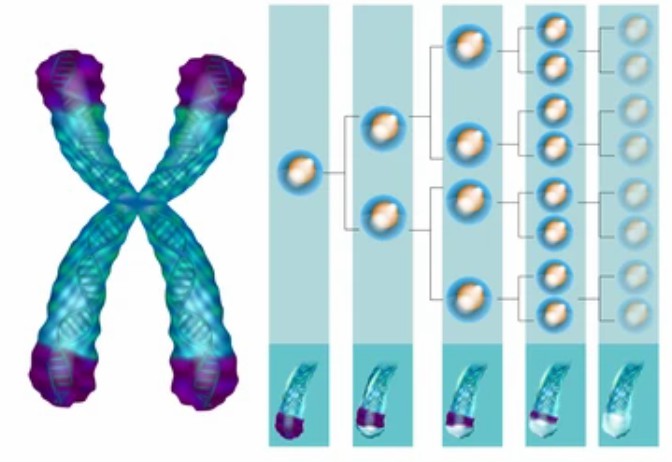Analysis of Plant Telomeres Regulating Senescence
Senescence is an irreversible growth and stagnation phenomenon that occurs during plant growth and development and is the process of accumulating random damage to an organism's DNA, proteins, and other macromolecules. Senescence ultimately leads to cell death, characterized by irreversible cell proliferation, altered gene expression patterns, increased resistance to apoptosis, and changes in specific cellular functions, accompanied by telomere shortening.
 Fig. 1 The phenomenon of telomere shortening that accompanies cell division.
Fig. 1 The phenomenon of telomere shortening that accompanies cell division.
As a leading biotechnology company, Lifeasible has extensive expertise in analyzing plant telomeres regulating senescence. Our advanced methodologies enable us to unravel the intricate mechanisms underlying telomere-regulated senescence in plants.
Plant Telomeres as Active Regulators Regulating Senescence
- Telomeres prevent the erosion of genetic material during DNA replication and protect the integrity of chromosomes. However, with every round of cell division, telomeres gradually shorten. This shortening serves as a biological clock that ultimately triggers senescence, aging, and irreversible cell cycle arrest.
- We provide an analysis of the role of plant telomeres as active regulators in regulating senescence. Telomeres undergo changes in structure and function as the plant ages, contributing to senescence. These changes include alterations in chromatin organization, telomere-associated proteins, and telomere length, thereby impacting the overall cellular state.
Indicators of Plant Telomeres Regulating Senescence
- We use telomere length as one of the indicators of senescence. As telomeres shorten over time, they reach a critical threshold length, triggering the activation of various genes associated with senescence. Studies have shown that plants with shorter telomeres exhibit accelerated senescence compared to those with longer telomeres.
- We show another indicator of telomere-regulated senescence is the telomere dysfunction-induced foci (TIFs). TIFs are DNA damage foci formed at dysfunctional telomeres and act as a signal for cellular senescence. These foci recruit DNA repair proteins and trigger a DNA damage response pathway, leading to the activation of senescence-associated markers.
- Moreover, we use telomere-associated proteins, such as telomere repeat binding factors (TRFs), which also serve as an indicator of telomere-regulated senescence. Changes in the composition or abundance of these proteins can specifically influence plants' telomere function and senescence progression.
Mechanism Analysis of Plant Telomeres Regulating Senescence
We further help our customers explore the mechanisms by which telomeres regulate plant senescence. The shortening of telomeres leads to the initiation of DNA damage signals, which in turn causes cellular senescence. Telomeres shorten with each round of cellular replication due to the end-replication of chromosomes, and the shortening of telomere length triggers cellular senescence, which in turn leads to oxidative damage, gene overexpression, chromatin alterations, and DNA damage, among other stresses.
At Lifeasible, we can provide invaluable insights into the plant telomeres and their role in senescence regulation with our expertise in this field. If you are interested in our services or have some questions, please feel free to contact us or make an online inquiry.
For research or industrial raw materials, not for personal medical use!
 Fig. 1 The phenomenon of telomere shortening that accompanies cell division.
Fig. 1 The phenomenon of telomere shortening that accompanies cell division.